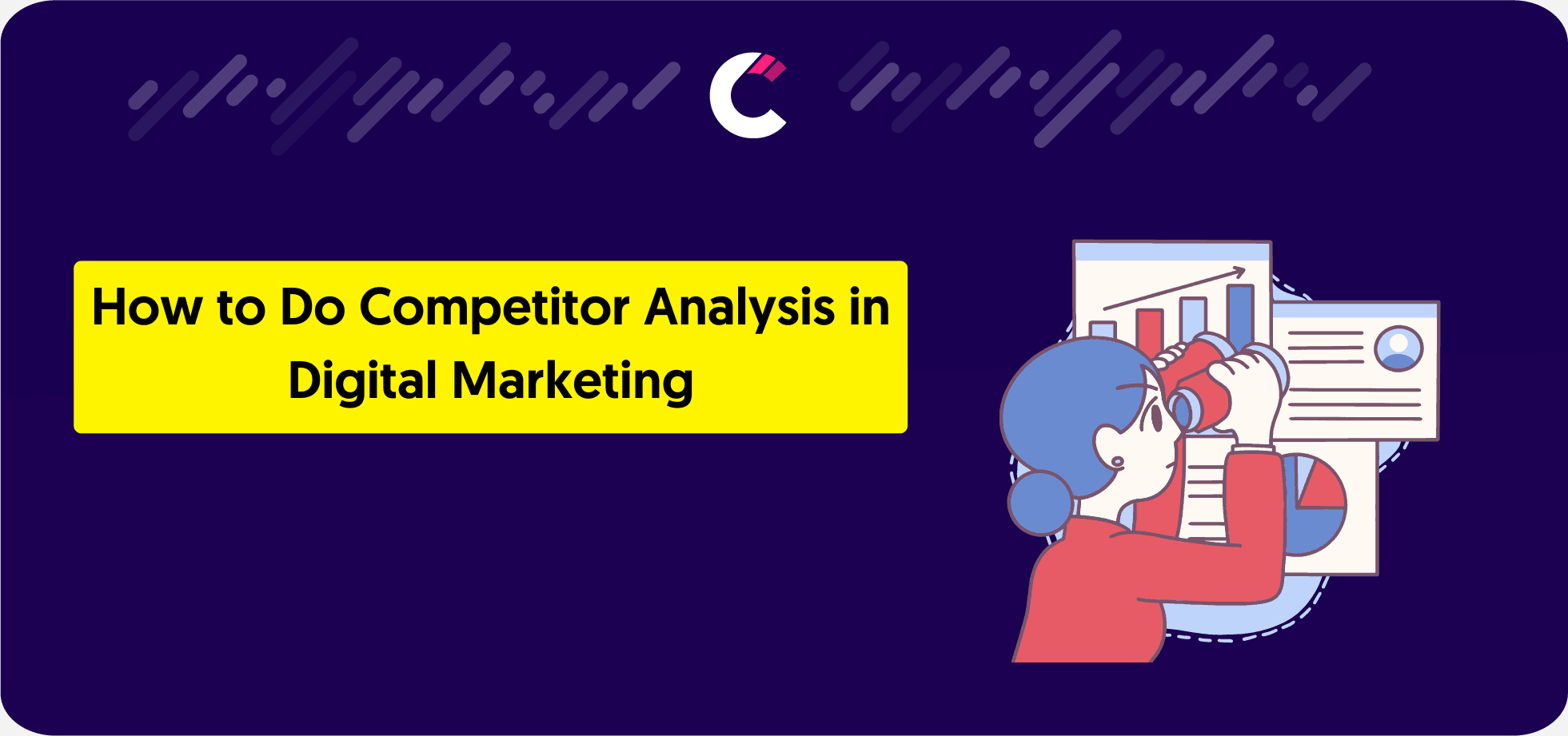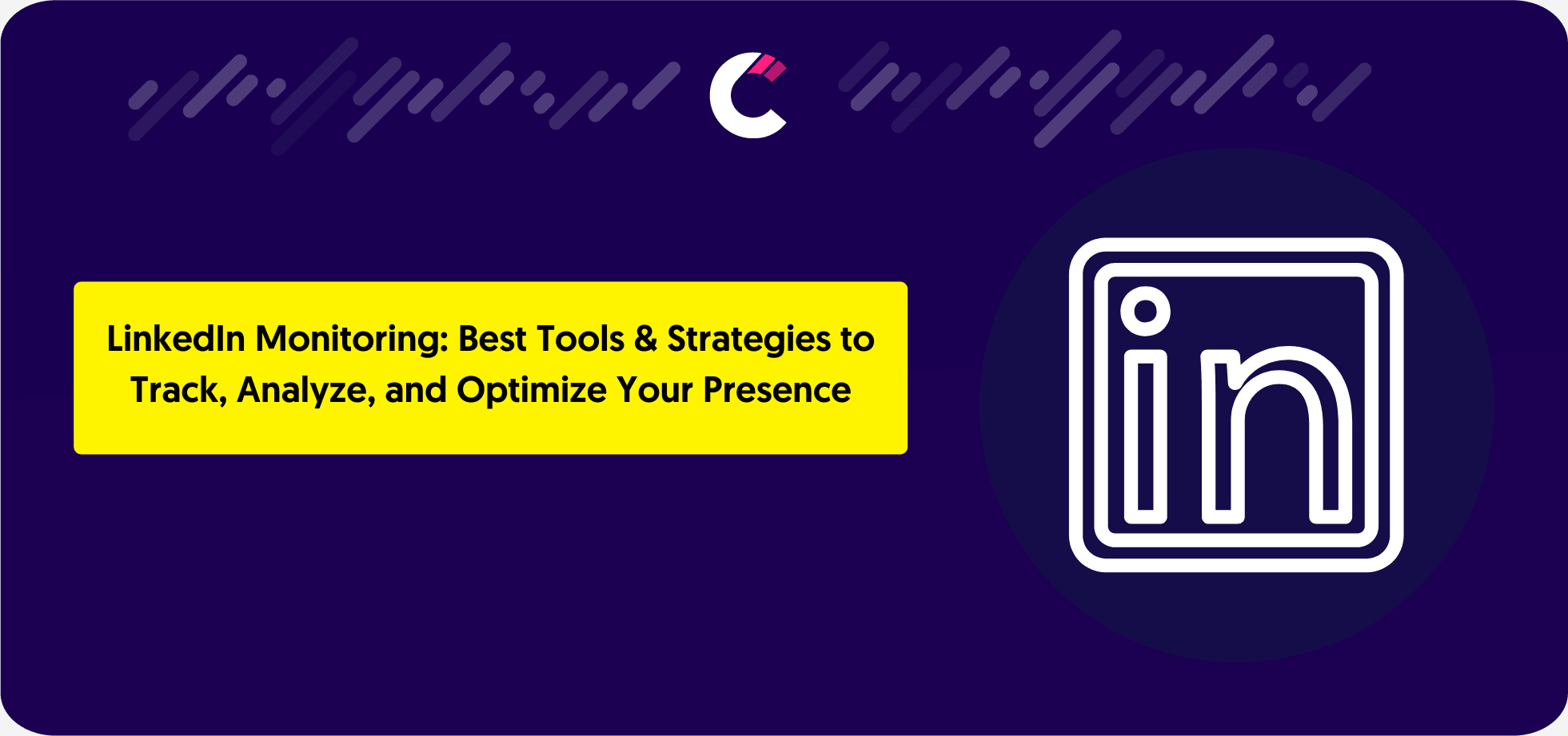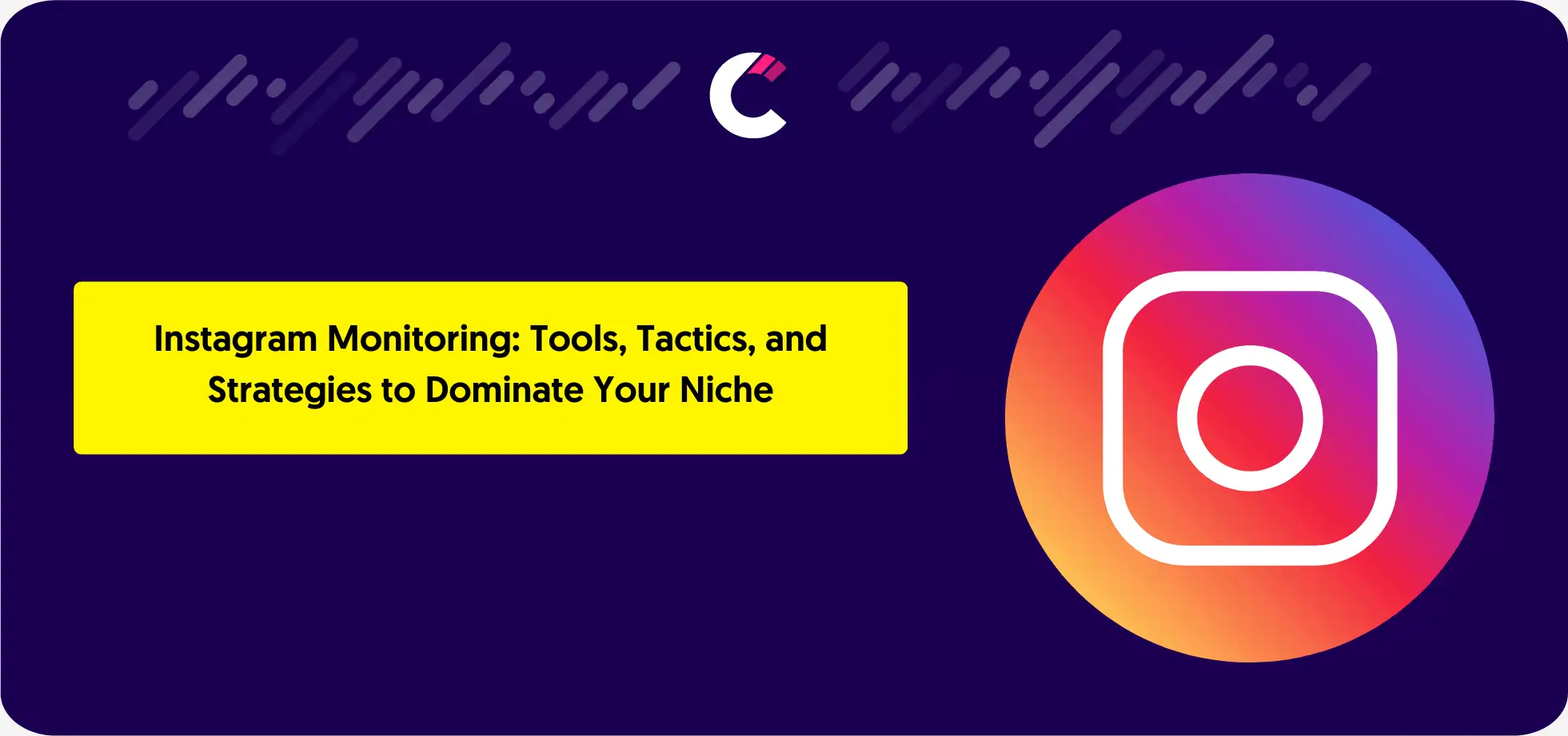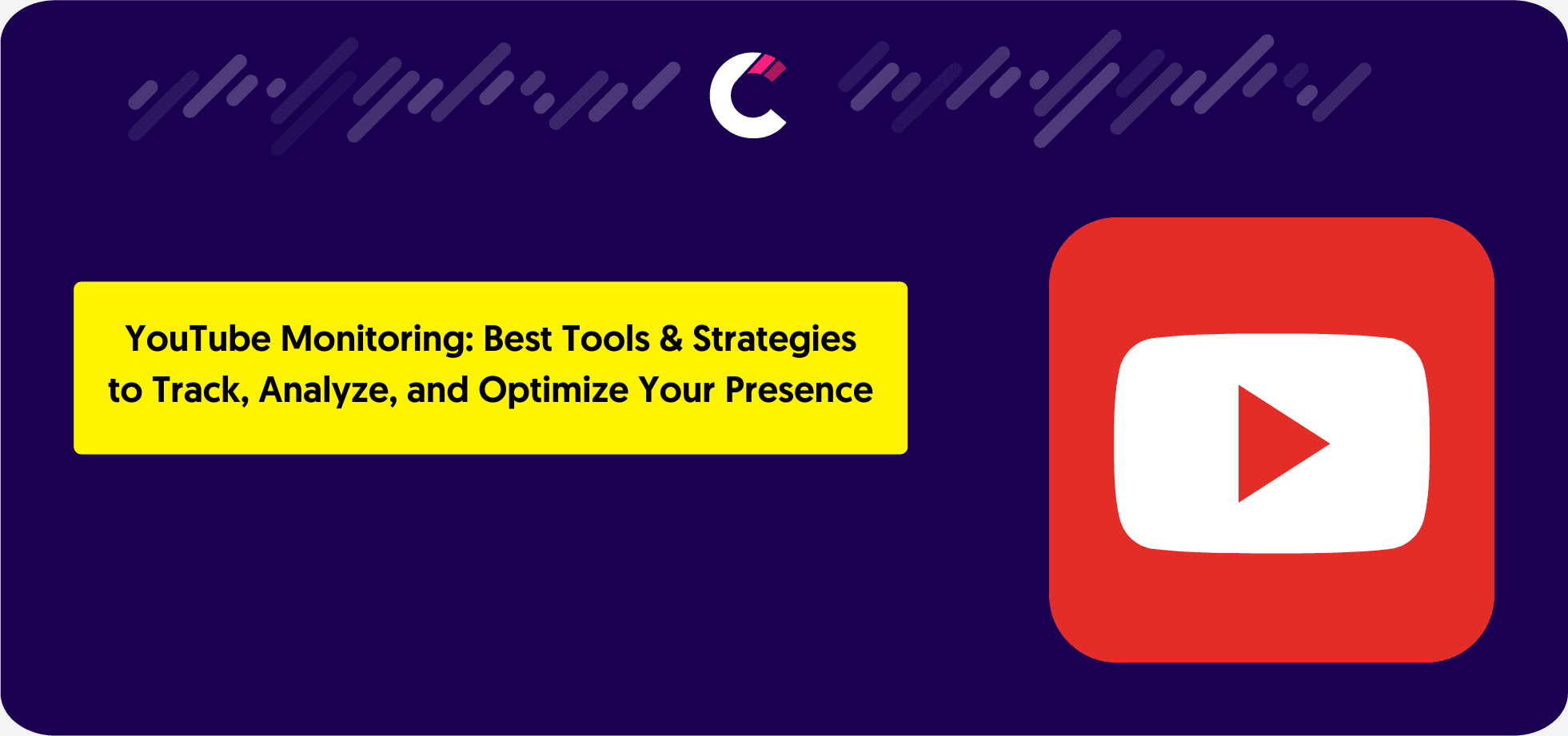Let’s cut the fluff: Competitor analysis is legalized corporate espionage. It’s how you steal rivals’ best ideas, dodge their faceplants, and become the MVP of your niche.
This guide? It’s your playbook for digital domination. We’ll show you how to:
🔍 Spot competitors’ secret SEO sauce
📱 Copy their viral social media hacks (ethically!)
💡 Turn their “meh” content into your goldmine
Spoiler: You’ll learn to stalk like Sherlock, but with fewer deerstalker hats and more profit.
What is Competitor Analysis in Digital Marketing?
Translation: It’s spying on competitors’ online game to answer:
- ”Why does Karen buy from them and not me?”
- ”How’d they get 10K followers in a week? Bots… or brilliance?”
- ”Why does their blog rank #1 for ‘best pizza socks’?!”
Real-World Example:
A tiny eco-bag brand analyzed 3 rivals’ Instagram feeds, noticed all used boring infographics, and pivoted to meme-heavy Reels. Result: 200% follower growth in 3 months.
Why It’s Not Creepy:
→ 76% of marketers say competitor analysis boosts ROI (HubSpot).
→ It’s not about copying—it’s about outsmarting.
Why Should You Do Digital Competitor Analysis?
Identify Successful Strategies
Translation: Steal their playbook (then add glitter).
How it works:
→ Competitor’s TikTok ads go viral? Reverse-engineer their hooks (”Wait, they’re using dogs to sell tax software?!”).
→ Real-World Hack: A skincare brand noticed rivals crushing it with “30-day challenge” posts. They copied the format but added GIFs. Engagement tripled.
Pro Tip: Tools like SEMrush and SpyFu are your cheat codes for keyword heists.
Spot Weaknesses
Find their Achilles’ heel. Then poke it.
Example:
If Competitor X’s website loads slower than a dial-up modem, brag about your “2-second load time” in ads.
Case Study: A meal-kit brand noticed rivals had zero vegan options. They launched plant-based boxes and stole 20% market share.
Sneaky Tool: Use Mention to track competitors’ review complaints. Their L = your W.
Discover New Opportunities
Your competitors’ blind spots = your goldmine.
How to strike:
- Trend Jacking: If rivals ignore TikTok Shop, dominate it before they notice.
- Niche Sniping: Competitors sell $100 yoga mats? Launch a $30 “student edition.”
Hypothetical Win:
You notice zero competitors target eco-conscious Gen Z with refillable deodorant. Boom—untapped market.
Tool Alert: Google Trends = your crystal ball for “next big thing” hunches.
Refine Your Strategy
Think of this as your digital glow-up.
Real-World Move:
A coffee shop saw rivals’ Instagram Reels flopping (too polished, no humor). They pivoted to chaotic “barista fail” clips. Followers doubled.
Key Rule: Borrow ideas, then 10X them. Competitor’s blog? Yours needs video guides + memes.
Stay Ahead of Industry Trends
Miss a trend, and you’re Blockbuster. Catch it early? You’re Netflix.
Example:
When every competitor started using AI chatbots, a boutique hotel added a “concierge TikTok bot.” Bookings jumped 35%.
Tool Savior: Use Exploding Topics to spot trends before they’re oversaturated.
Cautionary Tale:
Agencies that ignored Threads in 2023? Now scrambling to catch up. Don’t be them.
Identifying Your Digital Marketing Competitors
Before diving into competitor analysis, it’s crucial to first identify who your competitors are. Not all competitors are created equal, and understanding the different types can help you focus your efforts more effectively. You should be looking at direct competitors who offer the same products or services, and indirect competitors who target the same audience with different solutions. By correctly identifying your competitors, you can tailor your analysis to gain the most valuable insights into your market.
Types of Competitors: Direct and Indirect Competitors
Direct Competitors
Your business doppelgängers. They’re why Karen hesitates between your Shopify store and theirs.
Real-World Case:
Pepsi vs. Coke. Burger King vs. McDonald’s. Two bald men fighting over a comb.
How to Crush Them:
→ Feature Sniping: If their app has a 1-click checkout, add it… but throw in a meme reward.
→ Price Wars: If they charge $99/month, go $97. Petty? Yes. Effective? Ask Amazon.
Indirect Competitors
The silent killers. They’re not selling your product—they’re solving your customers’ pain points differently.
Example:
You run a gym. Your indirect competitor? That meditation app stealing your “stress relief” crowd.
Case Study:
Netflix’s indirect competitors aren’t just Hulu—they’re TikTok, sleep, and existential dread.
Pro Tip: Stalk indirect rivals’ reviews. Their complaints = your untapped opportunities.
Tools for Identifying Competitors
Competitors App is your business radar for hidden foes.
Why It Slaps:
→ SEO Spy Mode: Catches rivals’ keyword pivots (”Wait, they’re targeting ‘vegan leather’ now?!”).
→ Ad Assassin: Exposes their Google Ads spend (”$10K/month on ‘organic shampoo’? Yikes.”).
Pro Tip: Let Competitors App auto-scan for niche rivals. You’ll discover threats like:
”That Shopify store with 2 reviews… but 10K Instagram followers”
”TikTok influencer selling ‘viral’ product dupes”

Here are a few other helpful tools:
- SEMrush: Known for its robust features in tracking SEO performance, SEMrush also allows you to uncover competitors by analyzing which keywords they’re ranking for and how they perform in paid search.
- Ahrefs: Specializes in backlink analysis and keyword research, showing which sites are linking to your competitors and revealing their overall content strategy.
- SpyFu: Focuses on paid search insights, offering detailed data on competitors’ Google Ads and keywords, enabling you to discover their ad spend and PPC tactics.
With these tools, you can efficiently identify competitors and track their digital marketing efforts, providing a comprehensive view of the competitive landscape.
Manual Methods for Finding Competitors
In addition to using tools, there are several methods you can rely on to identify your digital marketing competitors. These approaches allow you to gather valuable insights beyond automated data.
- Market Research: Conducting thorough research within your industry is one of the most reliable ways to find out who your competitors are. Analyzing industry reports, trends, and market leaders can help you identify direct and indirect competitors.
- Customer Feedback: Your customers can be a rich source of information. By asking them which other brands or businesses they considered before choosing you, you can uncover competitors that may not be on your radar.
- Social Media and Online Communities: Social media platforms and online forums can reveal a lot about your competition. Pay attention to where your target audience is active, and see which brands or products they mention frequently. Participating in relevant online communities can help you discover competitors and monitor their engagement with the audience.
Using these methods, alongside competitor analysis tools, allows for a more comprehensive understanding of who your competitors are and how they engage with their target market.
How to Perform Competitor Analysis in Digital Marketing: A Step-by-Step Guide
Now that we’ve covered the basics, it’s time to dive into the practical steps of how to do competitor analysis in digital marketing. Below is a step-by-step guide to help you analyze key areas like website performance, SEO, paid ads, and content marketing, all using Competitors App to streamline the process.
Step 1: Analyze Your Competitor’s Site Performance
Start by evaluating the performance of your competitors’ websites. Analyze crucial factors like load times, mobile responsiveness, and user experience (UX). A fast, user-friendly website can make a significant difference in customer retention. Competitors App provides Website Change Monitoring, which tracks updates or changes on your competitors’ websites, offering insights into their evolving strategies.
You should also examine the user interface (UI) and overall site design. Look for clear navigation, effective calls to action, and mobile optimization. By comparing these elements with your own website, you can identify areas for improvement that will enhance your visitors’ experience.

Step 2: SEO Competitor Analysis
Next, focus on your competitors’ search engine optimization (SEO) efforts. Competitors App helps track their SEO keywords, showing which search terms drive traffic to their websites. By understanding which keywords your competitors rank for, you can identify gaps or opportunities to improve your own search rankings.

Another critical aspect of SEO is backlink analysis. Competitors with strong backlink profiles tend to perform better in search engine rankings. Competitors App enables you to monitor your competitors’ backlinks, helping you uncover potential link-building opportunities for your own SEO strategy.

Step 3: Paid Ads and PPC Competitor Analysis
To stay competitive in digital advertising, it’s essential to monitor your competitors’ paid ad campaigns. Competitors App provides comprehensive tracking of their Google Ads and other PPC campaigns, offering insights into their advertising strategies, including the keywords they’re bidding on and the ad copy they’re using. By understanding how your competitors allocate their ad budgets and what messaging they focus on, you can refine your own paid ads strategy to achieve better results.

Step 4: Social Media Competitor Analysis
Analyzing your competitors’ social media presence is key to understanding their engagement strategies. With Competitors App, you can track their social media activities, including profile updates, posts, and ad campaigns. Pay attention to their share of voice—how much of the conversation they dominate compared to your brand. Evaluate their content types, engagement rates (likes, shares, comments), and which platforms they focus on. This data helps you refine your own social media strategy by identifying trends, popular content, and areas for improvement.

Step 5: Content Marketing and PR Analysis
Content marketing is another area where competitor insights are valuable. Use Competitors App to monitor updates to your competitors’ blogs, videos, and other content. Evaluate the topics they focus on, their publishing frequency, and the engagement their content generates. This will help you spot content gaps that you can fill. Additionally, track their PR efforts—such as media mentions or partnerships—to see how they handle public relations and outreach, providing ideas for your own strategy.
What Does a Digital Competitor Analysis Include?
Think of this as CSI: Corporate Stalking Unit. We’re dissecting rivals’ digital guts to steal their best moves (legally, promise).
Target Audience and Customer Segmentation
Translation: ”Who’s Karen buying from instead of me?”
How to snoop:
→ Demographic doppelgängers: If your rival’s Instagram is all #VanLife millennials, but yours targets Gen Z couch potatoes, adjust or get left swiping.
→ Niche Nightmares: Competitors ignoring single dads who love keto? That’s your goldmine.
Pro Tip: Use tools like Facebook Audience Insights to reverse-engineer their targeting. Or just stalk their tagged posts. No judgment.
Product and Service Offerings
Your product is a Big Mac. Theirs is a Whopper. Who’s adding bacon?
Key Moves:
- Feature FOMO: If their SaaS tool has AI analytics and yours doesn’t, panic… then add it with emojis.
- Real-World Hack: A meal-kit brand noticed rivals skipping “30-minute recipes.” They launched ’em and saw a 40% sales bump.
Savage Example:
Peloton didn’t just sell bikes—they stole SoulCycle’s community vibe and added live classes. Ruthless.
Pricing Strategies
Price wars are the Hunger Games—may the odds be ever in your favor.
Spy Tactics:
→ Track their discounts: If Competitor X does “BOGO Tuesdays,” counter with “Free Guac Fridays.”
→ Tool Alert: Competitors App auto-flags price drops. No more manual spreadsheet stalking.
Case Study:
When ASOS slashed dress prices, H&M countered with “buy 2, get 1 free.” Sales spiked 25%. Petty? Yes. Profitable? Absolutely.
Marketing Channels
Your competitors are partying on TikTok? You’re still sending carrier pigeons.
Channel Warfare:
- SEO Heists: Use SEMrush to steal their top keywords (”Wait, they rank for ‘vegan leather’?!”).
- Ad Espionage: If rivals dominate Google Ads, pivot to TikTok Ads they’ve ignored.
Hypothetical Win:
A bakery found competitors were all-in on Instagram. They launched chaotic “cake fail” YouTube Shorts—and tripled website traffic.
Customer Engagement and Retention Tactics
This is where you turn ”meh” customers into ride-or-dies.
Steal-Worthy Moves:
→ Loyalty Programs: Copy Sephora’s points system, but add meme-tier rewards (”100 points = a DM from the CEO”).
→ Support Flex: If rivals take 24 hours to reply, promise “2-hour replies or free pizza.”
Real-World Slay:
Starbucks’ rewards app has 27M users. Why? They analyzed Dunkin’s “meh” perks and made theirs stupidly addictive.
FAQs About Competitor Analysis in Digital Marketing
1. What is Competitor Analysis in Digital Marketing?
Competitor analysis in digital marketing is the process of researching and evaluating your competitors’ online strategies, such as SEO, paid ads, social media, and content marketing. The goal is to understand their strengths, weaknesses, and opportunities so you can refine your own digital marketing strategy and stay competitive in your industry.
2. How Often Should I Conduct Competitor Analysis?
Competitor analysis should be conducted regularly to stay informed about your competitors’ strategies and market trends. Ideally, you should perform a comprehensive analysis every quarter, but ongoing monitoring through tools like Competitors App ensures you stay updated on any changes in real-time.
3. What Are the Best Tools for Competitor Analysis?
Some of the best tools for competitor analysis include Competitors App, which tracks everything from website changes to SEO and social media activities. Other tools include SEMrush and Ahrefs for SEO insights, and SpyFu for PPC tracking, though Competitors App offers a more comprehensive, all-in-one solution.
4. How Can Competitor Analysis Improve My SEO Strategy?
By analyzing your competitors’ SEO tactics, such as their ranking keywords, backlink profiles, and content strategies, you can uncover opportunities to improve your own SEO efforts. Competitor analysis helps you find content gaps, high-ranking keywords, and link-building opportunities that can boost your search engine rankings.
5. Can I Monitor My Competitors’ Ads?
Yes, you can monitor your competitors’ ads using tools like Competitors App, which provides insights into their paid ad strategies. This includes tracking their Google Ads, keywords, ad copy, and how frequently, which is often monitored by a facebook ad agency. they run paid campaigns. This information allows you to refine your own ad strategy for better results.






